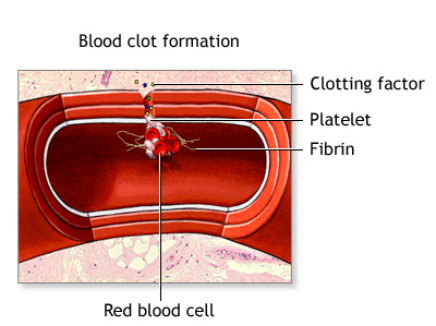Ati nur211 mobility exam
Ati nur211 mobility exam ( 29 Questions)
Which of the following are risk factors for disseminated intravascular coagulation (DIC)? (Select all that apply.)
Cancer is a significant risk factor for DIC, particularly certain types of leukemia and metastatic cancers. Cancer can trigger DIC through the release of procoagulant substances from tumor cells, leading to widespread clotting and subsequent bleeding. The hypercoagulable state associated with malignancies increases the risk of thrombotic events, which can precipitate DIC. Patients with advanced cancer are particularly susceptible due to the aggressive nature of the disease and the body's inflammatory response.
Sepsis is one of the most common causes of DIC. Sepsis triggers a systemic inflammatory response that activates the coagulation cascade, leading to the formation of microthrombi throughout the vasculature. This widespread clotting depletes clotting factors and platelets, resulting in a paradoxical increase in bleeding risk. The severity of sepsis correlates with the likelihood of developing DIC, making early recognition and treatment of sepsis crucial.
Trauma can lead to DIC through extensive tissue injury and the release of tissue factor into the bloodstream. Severe trauma, such as that from major accidents or surgeries, can overwhelm the body's hemostatic mechanisms, leading to uncontrolled clotting and bleeding. The inflammatory response to trauma further exacerbates the coagulation process, increasing the risk of DIC. Prompt management of traumatic injuries and monitoring for signs of DIC are essential in these patients.
Pregnancy complications such as placental abruption, amniotic fluid embolism, and severe preeclampsia can precipitate DIC. These conditions cause significant endothelial damage and the release of procoagulant substances, triggering the coagulation cascade. The physiological changes during pregnancy, including increased blood volume and hypercoagulability, further predispose pregnant women to DIC. Early intervention and management of pregnancy-related complications are vital to prevent DIC.
Blood transfusion reactions can lead to DIC through immune-mediated mechanisms. Incompatible blood transfusions can cause hemolysis and the release of procoagulant substances, initiating the coagulation cascade. The resulting widespread clotting and consumption of clotting factors can lead to bleeding complications. Careful matching of blood products and monitoring for transfusion reactions are critical to prevent DIC in transfusion recipients.
Choice A Reason:
Cancer is a significant risk factor for DIC, particularly certain types of leukemia and metastatic cancers. Cancer can trigger DIC through the release of procoagulant substances from tumor cells, leading to widespread clotting and subsequent bleeding. The hypercoagulable state associated with malignancies increases the risk of thrombotic events, which can precipitate DIC. Patients with advanced cancer are particularly susceptible due to the aggressive nature of the disease and the body's inflammatory response.
Choice B Reason:
Sepsis is one of the most common causes of DIC. Sepsis triggers a systemic inflammatory response that activates the coagulation cascade, leading to the formation of microthrombi throughout the vasculature. This widespread clotting depletes clotting factors and platelets, resulting in a paradoxical increase in bleeding risk. The severity of sepsis correlates with the likelihood of developing DIC, making early recognition and treatment of sepsis crucial.
Choice C Reason:
Trauma can lead to DIC through extensive tissue injury and the release of tissue factor into the bloodstream. Severe trauma, such as that from major accidents or surgeries, can overwhelm the body's hemostatic mechanisms, leading to uncontrolled clotting and bleeding. The inflammatory response to trauma further exacerbates the coagulation process, increasing the risk of DIC. Prompt management of traumatic injuries and monitoring for signs of DIC are essential in these patients.
Choice D Reason:
Pregnancy complications such as placental abruption, amniotic fluid embolism, and severe preeclampsia can precipitate DIC. These conditions cause significant endothelial damage and the release of procoagulant substances, triggering the coagulation cascade. The physiological changes during pregnancy, including increased blood volume and hypercoagulability, further predispose pregnant women to DIC. Early intervention and management of pregnancy-related complications are vital to prevent DIC.
Choice E Reason:
Blood transfusion reactions can lead to DIC through immune-mediated mechanisms. Incompatible blood transfusions can cause hemolysis and the release of procoagulant substances, initiating the coagulation cascade. The resulting widespread clotting and consumption of clotting factors can lead to bleeding complications. Careful matching of blood products and monitoring for transfusion reactions are critical to prevent DIC in transfusion recipients.

